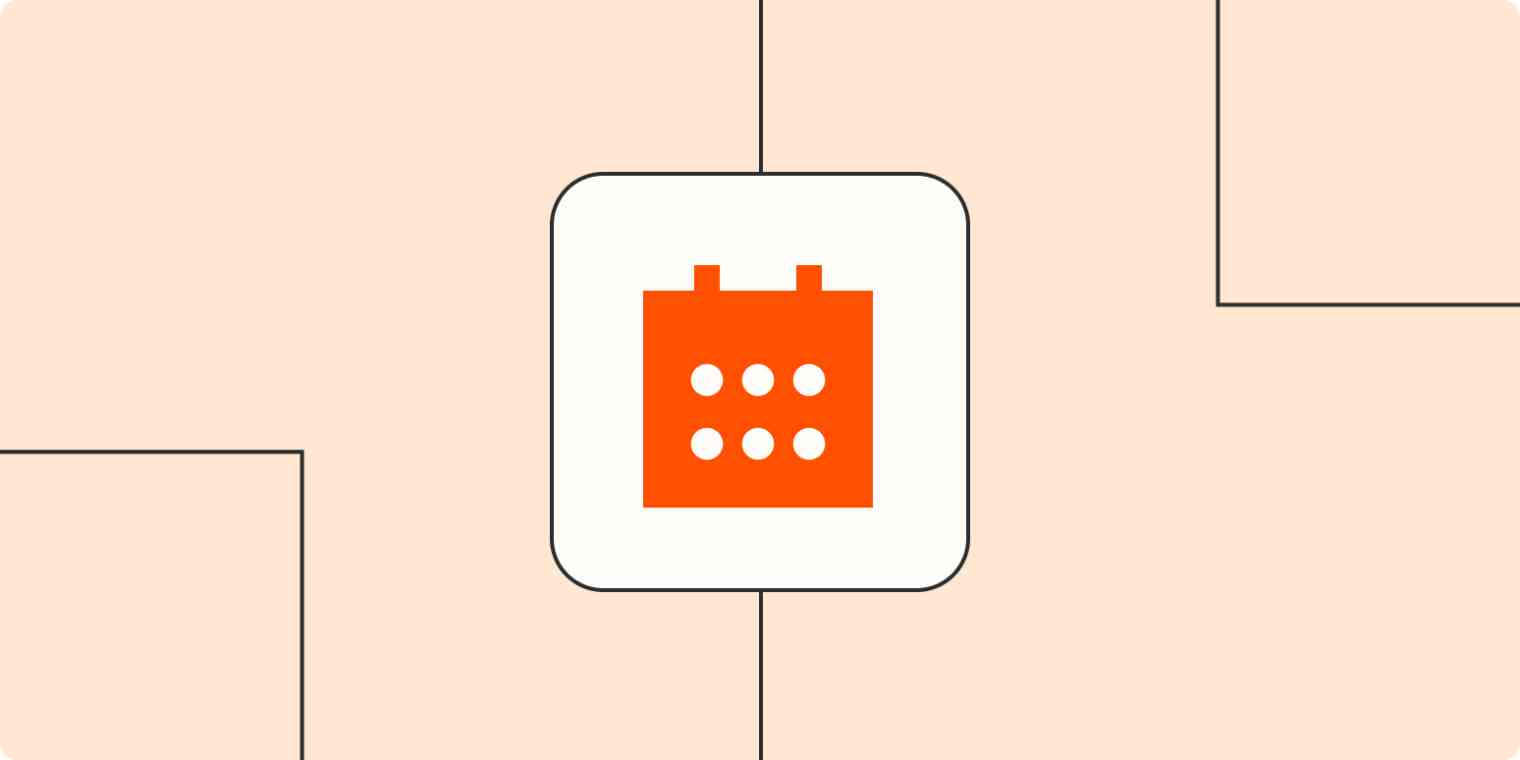You started your business because you love the trade you specialize in—not because you love managing a ridiculous schedule. Between vendors, established clients, prospective leads, service providers like accountants, and even your own internal team, scheduling can be a nightmare.
Scheduling software—whether it's appointment booking or meeting scheduling—removes a lot of this friction, but you need to know how to make the most of it. Here's why scheduling software is a must-have and how you can do more with it.
Once you've selected a scheduling app, here are 4 scheduling automation workflows to make meetings and bookings easier.
You can automate a time-consuming and repetitive task
Speaking from experience, it can take anywhere from four to ten exchanged emails discussing time zones, availability, and the length of calls just to set up a single meeting. This is inherently frustrating and time-consuming when it's done at scale, and it only becomes more complicated when I need to get on a call with multiple people at once who all have unique schedules.
Scheduling software prevents this. You pass along a link with your availability pre-filled, and they can find a time that works for them to book.

Any internal discussion about "no, that doesn't work for me, what about Tuesday?" happens without you, because they already know when you're free.
As an enormous added benefit, this puts you in control of how long a meeting lasts. People often want extra time on free consultation calls with me, for example, but when they book, they explicitly agree to a predetermined time frame that I set. Only want 15-minute calls? It's your prerogative to set it up that way, and the ball is in your court. If you try to schedule over email or let the other person set up the meeting, that might not be the case.
You can have a more standard schedule
One thing I loved about scheduling software was that it pushed me to automate my schedule. I'd leave an hour or two open several days a week, which could be used for impromptu meetings or scheduled calls. And if the calls didn't end up being booked, that was just more time for me to work on other stuff.
For example, Acuity Scheduling allows you to set hours of availability in blocks, with built-in features to override hours for specific days or to keep regular hours.

If you're worried about being overscheduled, you can also set up scheduling limits. If you want to accept appointments until fully booked, you can, but you can also ensure that you have a max number of calls or hours of calls per day if you choose.

These kinds of appointment scheduling features help you keep your schedule consistent without you needing to be on top of it all 24/7.
The software handles the details and the follow-up
Some scheduling tools, like Calendly, have features in place to handle every part of call scheduling, including sending the details and the follow-up messages to the person who booked the appointment with you.
This includes:
Automatically creating a unique Google Meet or Zoom link for new calls and sending it to both parties
Confirming the appointment through email
Sending a reminder email to both parties before the call takes place
Requiring payment upon appointment booking so you don't need to send a separate invoice
And, if the user decides to cancel or reschedule, all of that happens automatically and frees up the slot for others to snatch up later. The details can be pushed to your Google (or other) calendar, too, so you aren't waiting on an appointment that won't come.
Learn more about how to automate Calendly or Acuity with Zapier. Or take a look at our showdown: Calendly vs. Acuity.
It looks professional
When you're using scheduling software, it shows that you're taking your business seriously—and that you're in demand. For small businesses who are trying to establish themselves and start out with a great first impression, scheduling software can make a difference.
One way to boost this impression is to have your scheduling software embedded on your website, allowing people to book you easily without filling out a contact form first. Most scheduling software will have a spot for people to leave a note saying what the meeting is about, so it ends up killing two birds with one stone.
How to get the most out of your scheduling software
As you make scheduling and appointment booking software part of your business workflows, keep the following best practices in mind:
Choose the right tool. Make sure the tool you choose is right for your business. For example, if you need to accept payments for appointments, you'll need a heftier tool. But don't discount the apps you already use, like Google Calendar, if you just want the basics.
Consider setting up automatic limits to your schedule. The ability to say that I'm free from 12 to 3 but only want to take a total of four fifteen-minute calls in a single day is a huge advantage. It gives clients flexibility in choosing time while still preventing me from being overwhelmed or running late if a call runs over.
Pick a tool that offers integrations. Zapier integrates with a number of scheduling tools, letting you connect your scheduling software to the other apps you use most. That way, you can do things like sending automatic follow-up emails, adding new contacts to your CRM, and more.
Consider where you want to embed your scheduling tool. Many tools allow you to embed a scheduling app on your site or within an email. If you don't want it to be that public, you can just send out a link when a qualified lead gets in touch.
While meetings themselves are time-consuming, having scheduling software in place can mean that the appointment booking process doesn't have to be.





